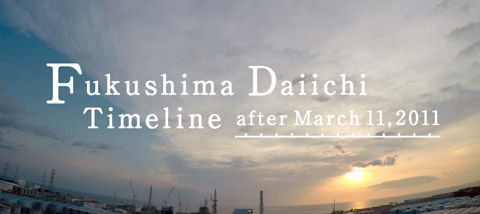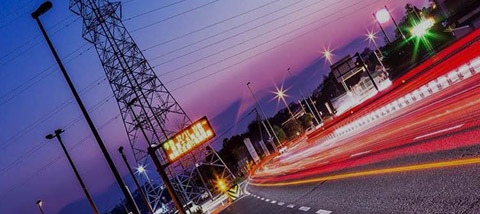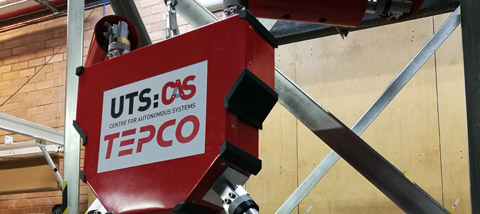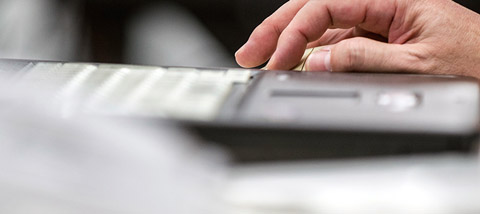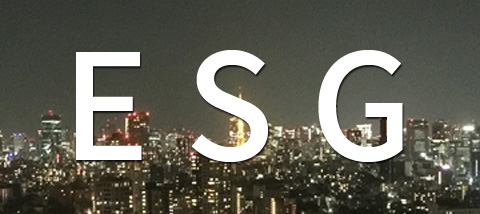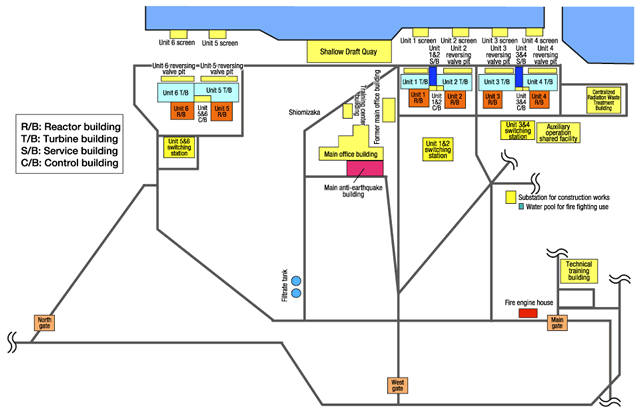1.1 Accident Review
There are 6 reactors (Units 1-6) at Fukushima Daiichi NPS. At the time the Tohoku - Pacific Ocean Earthquake struck, Unit 1, Unit 2 and Unit 3 were operating at rated power output while Unit 4, Unit 5 and Unit 6 were undergoing periodical inspections.
Table 1. Operational status of Fukushima Daiichi NPS units during the Tohoku - Pacific Ocean Earthquake
| Unit | Output | Status when the earthquake occurred | Aftermath Status |
|---|---|---|---|
| Unit 1 | 460MW | Operating at rated output | Automatic shutdown |
| Unit 2 | 460MW | Operating at rated output | Automatic shutdown |
| Unit 3 | 784MW | Operating at rated output | Automatic shutdown |
| Unit 4 | 784MW | Under regular inspection | - |
| Unit 5 | 784MW | Under regular inspection | - |
| Unit 6 | 1,100MW | Under regular inspection | - |
Figure 1. Site Map of the Fukushima Daiichi Nuclear Power Station
The reactors of Units 1-3 shut down safely with all the control rods automatically inserted into the reactor core in response to the earthquake's seismic intensity. Although all off-site power supply was lost at Fukushima Daiichi NPS, the emergency diesel generators (EDGs) started up automatically and ensured the station power, and the emergency cooling system kept cooling the reactors. Afterwards, a large tsunami struck the station that flooded and knocked out the electric equipment such as the EDGs and the cooling seawater pumps. Furthermore, the implementation of accident response measures was seriously hampered by not only the shutdown of off-site power and EDGs, but the situation of the batteries being rendered inoperable by flooding from the tsunami or running out of energy caused a loss of DC power. This disabled the reactor monitoring and cooling operations at the main control room.
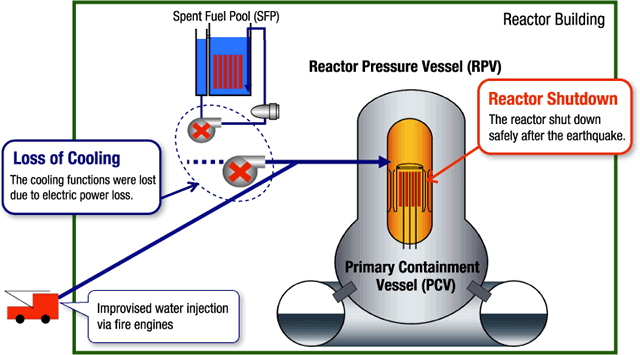
Figure 2. Diagrammatic Illustration
Since we were unable to sufficiently cool the fuels inside the reactors, the water level inside the reactor pressure vessel (RPV) of each unit decreased resulting in the bare exposure of the fuels to the inside atmosphere of the reactor. Hence, the fuel cladding, which is a metal tube that covers the fuel rods, was damaged by the high temperatures. This led to the fuel rods releasing radioactive materials. In addition, the chemical reaction between the fuel cladding and steam generated a substantial amount of hydrogen. These radioactive materials and hydrogen gas are believed to have been released with steam from the RPV into the primary containment vessel (PCV) through openings in such equipment as the main steam safety relief valves (SRVs). Moreover it is also believed that through areas such as the seals on the head of the PCV that were exposed to high temperatures, gas leaked into the reactor building. At Units 1 and 3, the leaked hydrogen accumulated at the upper part of the reactor building causing an explosion. At Unit 4, it is believed that during the Unit 3 PCV venting, hydrogen gas may have accumulated inside the reactor building by flowing through an area where the Units 3 and 4 pipes leading to the exhaust stack connects, resulting in a hydrogen explosion.
Meanwhile, the cooling function of the spent fuel pools inside the reactor buildings of Units 1 - 6 and the common spent fuel pool in the auxiliary operation shared facility were all rendered inoperable due to such causes as the complete loss of AC power.
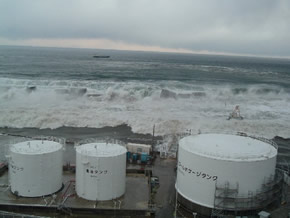
Photo 2. Tsunami that struck the Fukushima Daiichi NPS
Place: The east side of Unit5 taken from the southern side of the unit
(photographed on March 11, 2011)
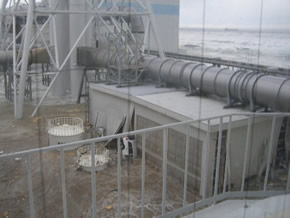
Photo 3. Tsunami that struck the Fukushima Daiichi NPS
Place: North side of centralized radiation waste treatment building taken from 4th floor
(photographed on March 11, 2011)
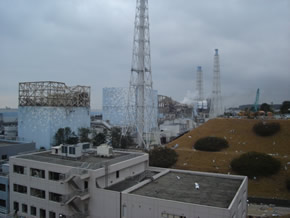
Photo 4. Units 1 - 4
-The grey building is the former main office building. The light blue buildings from the left are the reactor buildings of Unit 1, 2, 3, 4.
(photographed on March 15, 2011)
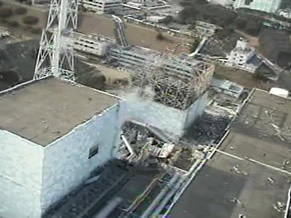
Photo 5. Reactor building of Units 1 and 2
-The buildings are Unit 2 and Unit 1 from the bottom of the photo. The left-side building is the reactor building, and the right is the turbine building.
(photographed on April 10, 2011)
Fukushima Nuclear Accident Analysis Report(Interim Report) December 2, 2011![]()
*For more details, please refer to "2.3 Overview of the Fukushima nuclear accident", "6 Impact of the Earthquake on Power Stations", "9 Evaluation of the Hydrogen Explosions","10 Analysis of the Accident and Identification of Major Issues" in this report.
Fukushima Nuclear Accident Analysis Report(Interim Report)-Summary- (December 2, 2011)![]()
Release of the interim report of Fukushima Nuclear Accidents Investigation Committee (December 2, 2011)
*Fukushima Nuclear Accident Analysis Report(Interim Report) and other relevant reports are availavle from this page.









